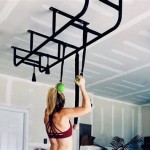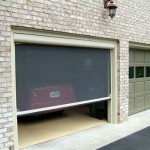Why Will My Garage Door Open But Not Close With Remote Liftmaster?
A common issue encountered by homeowners is a garage door that opens reliably with a Liftmaster remote but refuses to close using the same remote. This frustrating scenario can stem from various technical and mechanical sources, requiring a systematic approach to diagnosis and resolution. Addressing this problem efficiently prevents security breaches and ensures the convenience expected from an automated garage door system.
Understanding the intricacies of the Liftmaster garage door opener system is crucial for effective troubleshooting. These systems typically comprise a motor unit, a trolley mechanism connected to the door, safety sensors, a wall-mounted control panel, and remote controls that communicate via radio frequency. Any disruption in the functionality of these components can lead to a malfunction.
The symptom of a garage door opening but not closing with the remote specifically points to a problem related to the closing signal, sensor operation, or obstruction detection. It is important to eliminate the simplest potential causes before delving into more complex issues.
1. Battery and Signal Interference
The first area to investigate is the remote itself. A weak or dying battery is a prevalent cause of intermittent remote functionality. While the remote might have enough power to send the "open" signal, the "close" signal, which might require more power, could be failing. To verify this, replace the battery in the remote with a fresh one. Ensure the battery is correctly installed and of the appropriate voltage. Consult the Liftmaster remote's manual for the correct battery type.
Radio frequency interference can also disrupt the signal between the remote and the garage door opener. Other electronic devices operating on similar frequencies (e.g., certain types of lights, other garage door openers in the neighborhood, or even some baby monitors) can interfere with the remote's signal. Test the remote at closer range to the garage door opener. If the door closes successfully at a closer proximity, interference is a likely culprit. Try repositioning the garage door opener's antenna, or investigate potential sources of interference in the vicinity.
The remote itself may also need reprogramming. Over time, the remote’s signal encoding might become corrupted or lost, especially if the remote has been exposed to extreme temperatures or significant physical impact. Consult the Liftmaster owner’s manual for instructions on how to reprogram the remote to the garage door opener unit. Typically, this involves pressing a "Learn" button on the opener motor unit and then pressing a button on the remote.
Consider testing all available remotes. If only one remote fails to close the door while others work, the problem is isolated to the specific remote that is malfunctioning. This eliminates the garage door opener itself as the source of the issue.
2. Safety Sensor Misalignment or Obstruction
Liftmaster garage door openers are equipped with safety sensors, also known as photo eyes, located near the bottom of the door tracks on either side of the opening. These sensors create an invisible beam of light that, when interrupted, prevents the door from closing. This safety feature is designed to prevent the door from closing on obstructions, such as people or objects.
Misalignment of the sensors is a common reason for a garage door to open but not close. The sensors must be perfectly aligned to function correctly. Inspect the sensors to ensure they are clean and free from dirt, dust, or spiderwebs. Even a small amount of debris can obstruct the beam. Use a soft cloth to gently clean the lenses of the sensors.
Verify the alignment of the sensors. Each sensor usually has an indicator light. When the sensors are properly aligned and the beam is unbroken, both lights should be illuminated. If one or both lights are flickering or off, the sensors are likely misaligned. Loosen the screws holding the sensors in place and carefully adjust their position until both lights are steadily illuminated. Tighten the screws once the alignment is achieved. It may be necessary to have someone assist in observing the indicator lights while adjusting the sensors.
Check the wiring connected to the safety sensors. Loose or damaged wiring can disrupt the signal and prevent the door from closing. Ensure the wires are securely connected to the sensors and the garage door opener motor unit. Look carefully for any signs of damage, such as frayed wires or broken connectors. If any damage is found, the wires should be repaired or replaced by a qualified technician.
Sometimes, sunlight can interfere with the sensors, particularly if the garage door faces east or west. The bright sunlight can overwhelm the sensors and prevent them from functioning correctly. Try shielding the sensors from direct sunlight to see if this resolves the issue. Installing hoods or shields over the sensors can provide a permanent solution.
3. Wall Control Panel and Wiring Issues
The wall control panel, often located inside the garage, serves as another control point for the garage door. This panel usually includes a button to open and close the door, as well as other functions, such as a light control and a lock function. If the wall control panel functions correctly to open and close the door, it indicates that the problem is likely with the remote and not with the garage door opener motor unit itself.
However, if the wall control panel also fails to close the door, the issue might be with the wiring connecting the panel to the garage door opener. Inspect the wiring for any signs of damage, such as loose connections, frayed wires, or corrosion. The wiring typically runs from the wall control panel to the opener motor unit. Ensure that the wires are securely connected at both ends.
The wall control panel could also be malfunctioning. If the panel is old or damaged, it might not be sending the correct signal to the garage door opener. Try temporarily disconnecting the wall control panel from the opener. Then, try using the remote to close the door. If the remote works with the wall control panel disconnected, the wall control panel is likely the source of the problem and will need to be replaced.
Some Liftmaster wall control panels have a lock feature, also known as a vacation mode, which disables the remote controls for security purposes. Ensure that the lock feature is not enabled. The lock feature is typically activated by pressing and holding a button on the wall control panel. Consult the owner’s manual for specific instructions on how to disable the lock feature.
If the wiring and the wall control panel appear to be in good condition, the issue might be with the logic board inside the garage door opener motor unit. The logic board controls the various functions of the opener, including the remote control signal reception. A faulty logic board can prevent the door from closing, even if the remote is functioning correctly. Replacing the logic board is a more complex repair that might require the assistance of a qualified technician.
4. Limit Switch Adjustment
Limit switches are components within the garage door opener that regulate how far the door opens and closes. These switches prevent the door from traveling too far in either direction, protecting the door and the opener mechanism from damage. If the closing limit switch is improperly adjusted, the opener might think the door is already closed, preventing it from responding to the close signal from the remote.
Locate the limit switch adjustment screws on the garage door opener motor unit. These screws are typically labeled "Up" and "Down" or "Open" and "Close." Consult the Liftmaster owner's manual for the precise location of these screws on your specific model. Use a screwdriver to carefully adjust the "Down" or "Close" limit switch. Make small adjustments and test the door after each adjustment. The goal is to ensure the door closes completely without excessively compressing the weather stripping at the bottom of the door.
If the limit switch is set too high, the door may not close completely, and the opener might reverse direction due to the safety sensors detecting an obstruction. If the limit switch is set too low, the door may close too tightly, potentially damaging the door or the opener mechanism. It is important to find the correct balance to ensure smooth and reliable operation.
The limit switch settings can sometimes drift over time, especially with older garage door openers. Regularly checking and adjusting the limit switches can help prevent future problems. However, it is crucial to perform these adjustments carefully and methodically to avoid damaging the opener or the door.
If adjusting the limit switches does not resolve the issue, the limit switch itself might be faulty and require replacement. A faulty limit switch can send an incorrect signal to the opener, preventing it from responding to the close command. Replacing the limit switch is a relatively straightforward repair, but it is important to ensure that the new switch is compatible with your specific Liftmaster model.
5. Motor and Gear Issues
Although less common, problems within the garage door opener's motor or gear assembly can sometimes manifest as a failure to close the door with the remote. The motor provides the power to lift and lower the door, while the gear assembly transmits that power to the trolley mechanism.
Inspect the motor for any signs of damage or wear. Listen for unusual noises coming from the motor, such as grinding or squealing sounds. These noises could indicate a problem with the motor bearings or other internal components. If the motor is running but the door is not moving, the problem might be with the gear assembly.
The gear assembly typically consists of a plastic gear that connects the motor to the trolley mechanism. Over time, this gear can wear down or break, especially in older garage door openers. Inspect the gear for any signs of damage, such as cracks, missing teeth, or excessive wear. If the gear is damaged, it will need to be replaced.
Replacing the gear assembly is a common repair for older Liftmaster garage door openers. Replacement gear kits are readily available and include all the necessary components. However, this repair requires some mechanical skill and knowledge. If you are not comfortable performing this repair yourself, it is best to consult a qualified technician.
A damaged or malfunctioning motor can also prevent the door from closing with the remote. If the motor is not providing enough power, it might be able to open the door but not close it. Testing the motor requires specialized equipment and knowledge. If you suspect a problem with the motor, it is best to consult a qualified technician for diagnosis and repair.
If the garage door opener is very old, it might be more cost-effective to replace the entire unit rather than attempting to repair the motor or gear assembly. New garage door openers offer improved features, such as enhanced security, quieter operation, and battery backup systems. Consider the age and condition of your current opener when deciding whether to repair or replace it.

Garage Door Won T Close And Light Flashes How To Fix Easy

Garage Door Remote Not Working 5 Most Common Reasons Why

Why Your Garage Door Won T Close And How To Fix It Champion Repair

Apple Pay

Liftmaster Garage Door Opener Opens But Won T Close How To Fix It

Easy Fix Garage Door Remote Not Working

How To Fix Garage Door Opener Remote Champion Repair

Troubleshooting Your Liftmaster 8500 Door Opener High Lift Inc
Liftmaster Garage Door Not Working Diy Solutions 2024

How To Reset A Liftmaster Garage Door Opener Quickly
Related Posts








